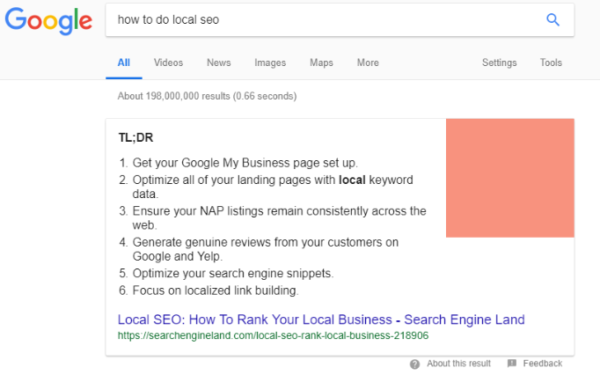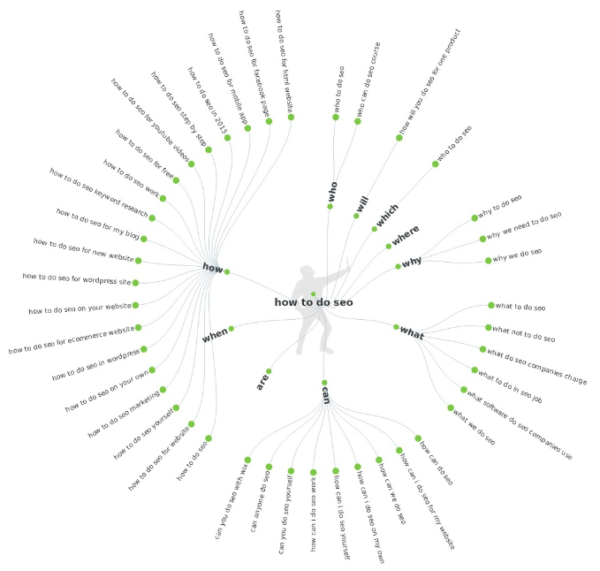SEO is a race to the summit. But whereas previously the summit was position 1, Google has changed the goalposts so that Position 0 is now the highly coveted top-spot for marketers.
What is it exactly and how do we get there? This article reveals all with 5 powerful tips to help you claim position 0 in Google.
What is Position 0?
Position 0 — also known as a featured snippet — appears at the top of the SERPs. Because it’s positioned above the normal search results, including position 1, it’s known as position 0.

It’s essentially a snippet of an answer to a user’s question that Google has deemed to be the best one.
Marketers love position 0 because of its visibility, as well as Google displaying a snippet of their content. This preview can boost click-through rate, which in turn can boost the overall ranking of a website.
Position 0 doesn’t actually show up in all search results, however, which means you don’t need to chase it for every keyword and piece of content. As data shows, it appears in less than 10% of search results.
So the first thing you need to do is …
Pick the right opportunity
Not all markets are ripe for position 0.
For example, if you run a local business and want local traffic, it’s a good idea to avoid featured snippets and instead dedicate your time and energy to more productive avenues, such as Google Maps.
On the other hand, if your market needs answers to frequently asked questions, you can consider ranking for position 0.
Back in 2016 STAT analysed around 92,000 featured snippet queries and found out some of the most popular niches that rank for featured snippets are the following:
- Health
- Requirements
- Status
- Transitional
- Time
- Mathematical
- Financial
On the flip-side, it’s generally held that shopping, video, and local searches don’t return featured snippet.
As a result, before you dive into your keyword research, you need to make sure that there’s even an opportunity here.
Provide answers to search queries
Once you’ve decided on a niche/opportunity, you then need to answer a question.
For many, this can be the hard bit. What questions need answering? How can we be sure that the question we answer is even a featured snippet?
This actually isn’t as hard as it sounds because there are tools to help you.
Answer the Public is a tool that shows you the questions that are being asked in your niche.
If a featured snippet is returned, see if you can create content that is even better. Spot the weaknesses and exploit them. It’s important to note that any content that ranks on position 0 doesn’t always stay there — it can be toppled.
Do your keyword research
This doesn’t have to alter too much to the usual keyword research you’ve been doing, but you do need to shift focus so that your main keyword is a question keyword.
So start using question keywords in your content — preferably in the first paragraph — and then add your secondary and tertiary keywords as you normally do.
Start adding question keywords to header 2s, title tags, and meta descriptions, too.
Be direct and to the point
Content that is protracted is a major turn-off to your site visitors and can cause a high bounce rate. Site visitors want to see straight away that you’ve got the answer to their problem, and they’re not prepared to wait around as you throw words like “effluent” and “avuncular” at them.
The thing is, Google also wants you to be specific. If you are, there’s a chance it will rank you on position 0.
Why?
The whole point of a featured snippet is that the snippet chosen is the one that provides the best and clearest answer to a particular question.
Google crawls your content, and its crawlers need to see that you’ve answered the question as directly and as straightforward as possible. This is why it’s important that you ask the question and answer it with brevity in the first paragraph. Create a summary at the start of the content so that both your audience and Google can see it.
Then, you can spend the rest of the content adding more value.
Write longer content
Marketers have been arguing for a while over what content works best — short-form or long-form.
While many of us were probably praying that short form works best (it takes less time to write!) the news is in — and it’s long form that works best.
Long-form content works best for many reasons when it comes to SEO. It means more opportunities for backlinks and images for one thing, and it gets shared more.
When it comes to position 0, Google chooses content that is in-depth and which offers lots of value.
Indeed, it wants you to add as much value as you can. And you can do this better via long-form content than you can short form.
Just make sure that every word counts and always be focused on the value factor.
